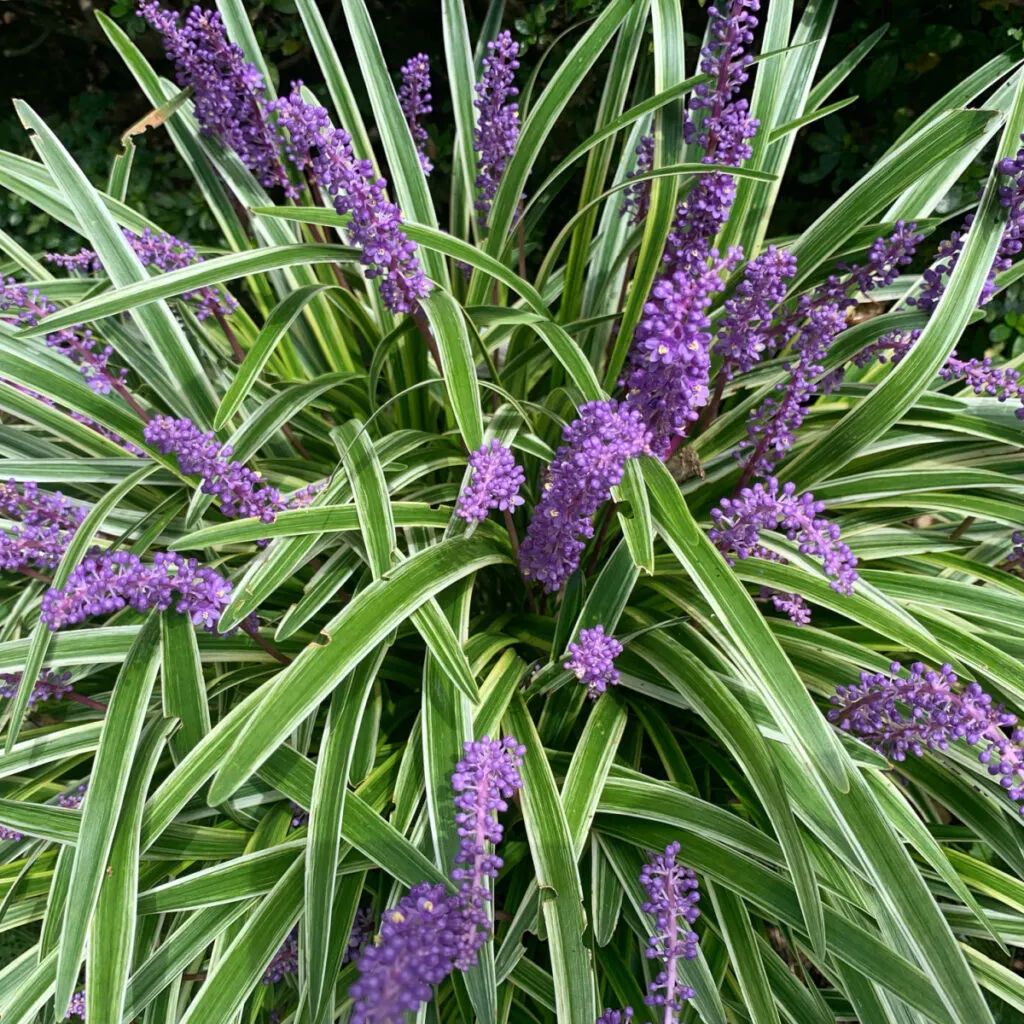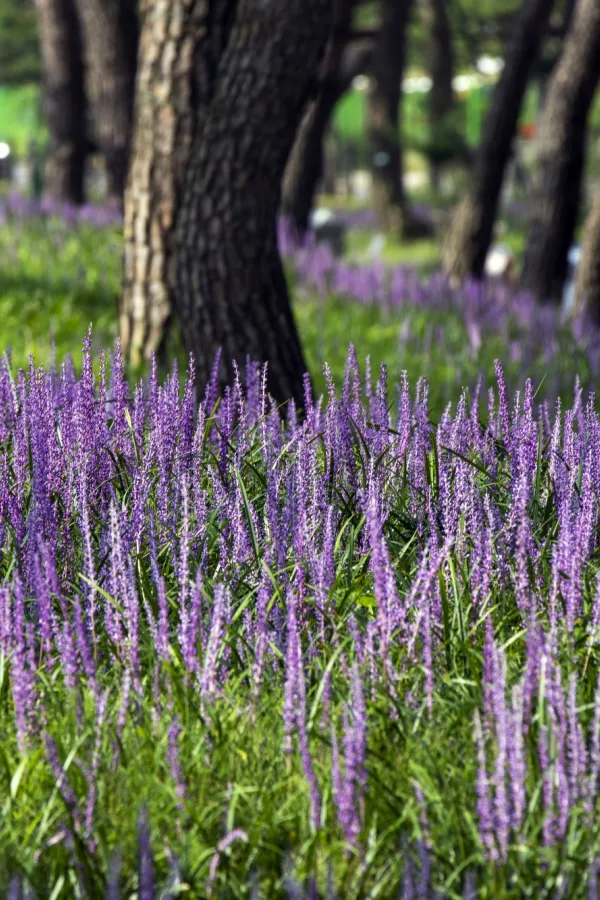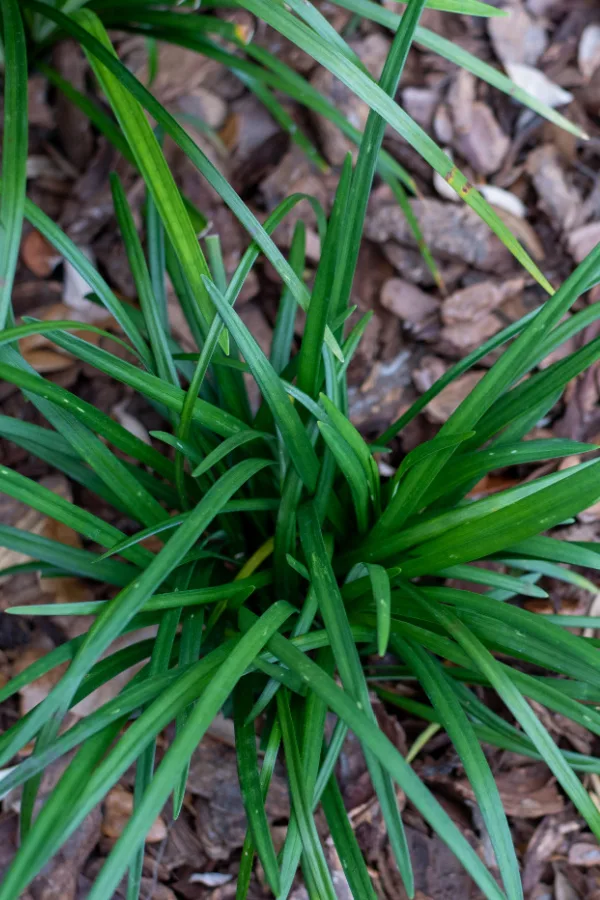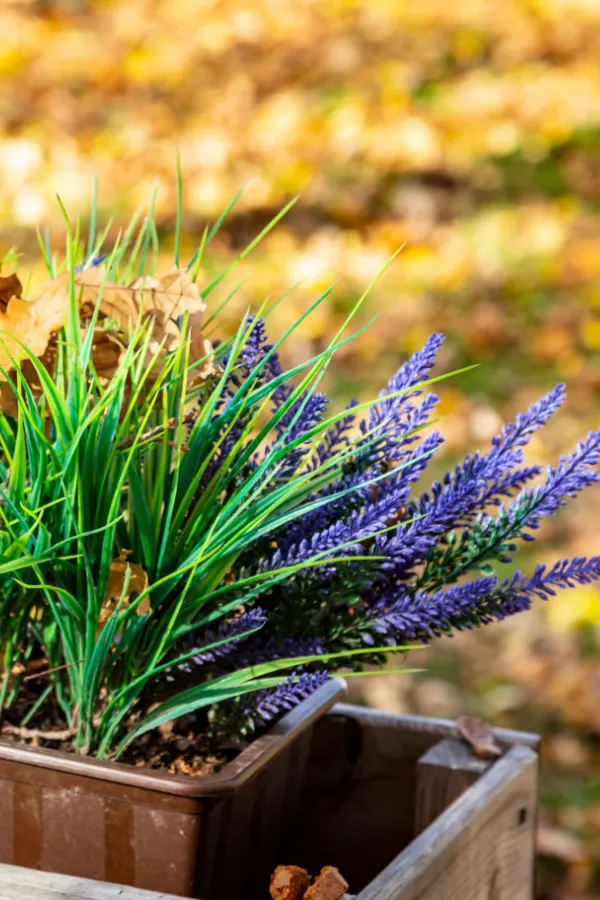If you are looking for the perfect drought-resistant plant to add to your property, then growing lilyturf should be in your future! This easy care perennial is an excellent choice as a border plant, placed along paths, or even to grow in pots or containers.
Often referred to as liriope, lilyturf is not only drought tolerant, but deer resistant as well. In addition, you can grow it in almost any soil type, from rich and loamy soil to even heavier clay-like soils that many plants struggle in.
As long as lilyturf isn’t sitting in overly saturated soils, the perennial will flourish. Best of all, once it’s established, you rarely need to water it – or do any other maintenance for that matter!

Lilyturf provides gardeners with beautiful spikes that flower from late summer into early fall, long after other perennials start to fade and dye out. Even without the blooms, the foliage of lilyturf is attractive and great for providing texture to areas where other plants might fail to thrive.
Another great adaptation of lilyturf is its ability to grow in a large variety of growing zones and climates. From zones 4 all the way to 10, you can successfully grow lilyturf on your property with the slightest of care or worries.
Varieties of Lilyturf – Growing Lilyturf
Contrary to its name, lilyturf is not in the lily family at all. In fact, it is actually part of the asparagus family. And while it looks like a perennial grass, lilyturf instead is truly a flowering perennial that just happens to be excellent for using as a ground cover.
There are two main varieties of lilyturf: common lilyturf and creeping lilyturf. Common lilyturf is hardy in growing zones 5 through 10. It only grows up to around 18 inches tall and is excellent for bordering walkways and paths.
Creeping lilyturf, as its name suggests, is more of a ground cover variety that spreads easier than common lilyturf. Creeping lilyturf is shorter and is hardy to up to growing zone 4.
Both types feature tall stems with purple flowers and green foliage. The foliage can range from dark green to bluish-green, with some cream coloring mixed into some varieties. Some types even have variegated foliage with white streaks accenting the light or dark green foliage.

When selecting varieties, it’s important to note that creeping lilyturf can be considered invasive in some locations due to its spreading characteristics. It’s fast growing nature does make it excellent for filling in border areas, but in some climates, it can grow a little too fast! You can check with your area’s local extension office to see if creeping lilyturf is invasive in your area.
How To Plant, Grow, And Maintain Lilyturf
Planting Lilyturf – Growing Lilyturf
While you can grow lilyturf from seeds, it is a slow process. Because of this, growing from divisions or transplants is often the best route to go. You can find lilyturf starts in spring in most local nurseries and garden centers.
Another great feature of lilyturf is that it can grow in about any sunlight conditions. While partial shade seems to be the ideal location, it will also tolerate full sun as well as full shade. If you grow it in complete shade though, you will have reduced blooming.
Lilyturf will grow in almost any soil type as long as it is well draining. Be sure to choose a spot that isn’t in low-lying areas to avoid constantly wet soil. Its roots will struggle and often rot away if they sit in water for long periods.

How To Plant
To plant, create a hole that is a few inches larger than the root ball of the lilyturf transplant. Mix in a bit of compost to not only help boost the nutrients in the soil but also to help promote drainage. Lilyturf does not require a lot of nutrients to survive, but compost at planting time will help it set its roots faster.
Add the lilyturf into the planting hole, back fill with the soil and compost mix and water well. Space any additional plants about one foot apart from one another. Adding a three to four inch layer of mulch between plants will allow the lilyturf to fill in without the worry of weeds.
You can plant lilyturf any time during the year between spring and fall. The plant is so hardy, it can even be divided at any point of the growing season without worry.
Long-Term Care – How To Grow and Maintain Lilyturf
Watering
When first planted, a bit of water now and then for your lilyturf will help it set its roots and establish quickly. It doesn’t take much, in fact, watering once a week for the first four to six weeks is more than enough to help it establish. After, you no longer will need to water lilyturf since it is so drought tolerant.
Fertilizing
Another great advantage to growing lilyturf is that you do not need to add any type of fertilizer. It is a very low feeder, which means it takes few nutrients and resources in order to grow and flourish.

If it looks like your plants are suffering or if you are struggling to get blooms, you can add a light dose of a balanced, all-purpose fertilizer in the spring. Only use about half of the amount suggested on the container when using. (Affiliate Link: Osmocote Smart-Release Plant Food)
Dividing & Pruning
In warmer climates, lilyturf will grow as an evergreen all year long. In cooler areas, it will die back in the wintertime with a flush of new growth coming back each spring. However, in both locations, you can choose to cut back the foliage in the fall. This will not only clean up the growing location but also get plants ready for better, more robust spring growth.

You can divide lilyturf plants every three to five years. This isn’t required but will help to keep plants from spreading too much. That can be especially useful when growing creeping varieties of lilyturf. It’s best to divide plants in either early spring or late fall, but again, they will survive summer dividing as well.
Growing In Containers
You can easily grow lilyturf in pots as long as they have plenty of drain holes. When initially planting lilyturf, choose a pot that is about three to four inches wider and taller than the rootball. This allows the plant to grow and expand for a few years before needing to be re-pot.
Pests & Issues
Lilyturf is not bothered by many pests and insects. However, typical outdoor pests can become an issue if left unchecked.
Be on the lookout for snails and slugs that like to feed on lilyturf. Aphids and mealybugs can also cause issues for lilyturf as well. (Check out “How To Keep Aphids Out Of Your Garden” for simple tips on removing them without the use of chemicals).
With only a few basic needs required when planting, lilyturf is an excellent drought-tolerant choice for adding beautiful foliage and texture to your property each year!
Follow Our Facebook Page For Even More Great Tips! Simple Garden Life Facebook Page
Simple Garden Life is a website dedicated to keeping gardening fun, simple and enjoyable! We publish two new articles each week along with a new garden podcast episode every two weeks. This article may contain affiliate links.
